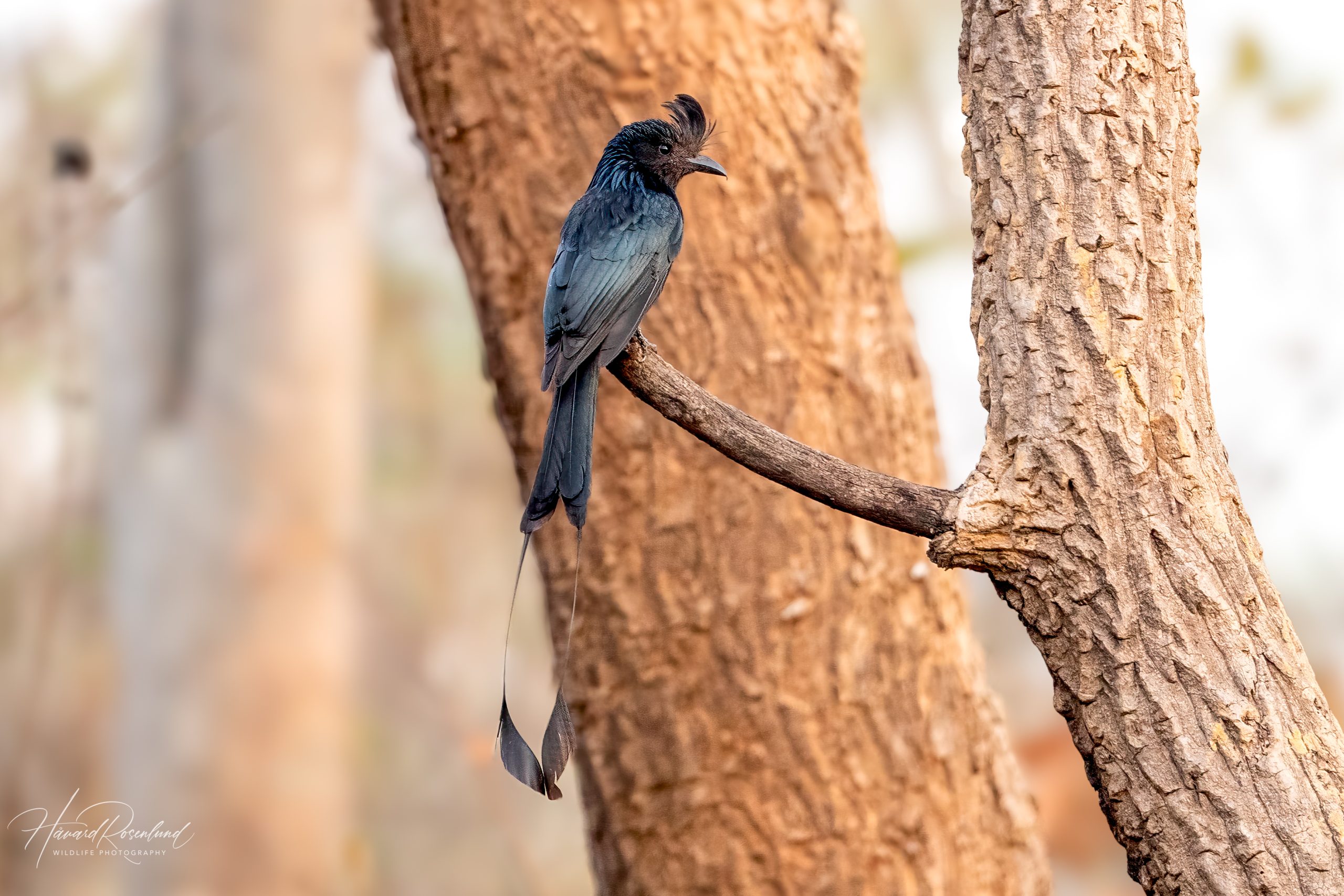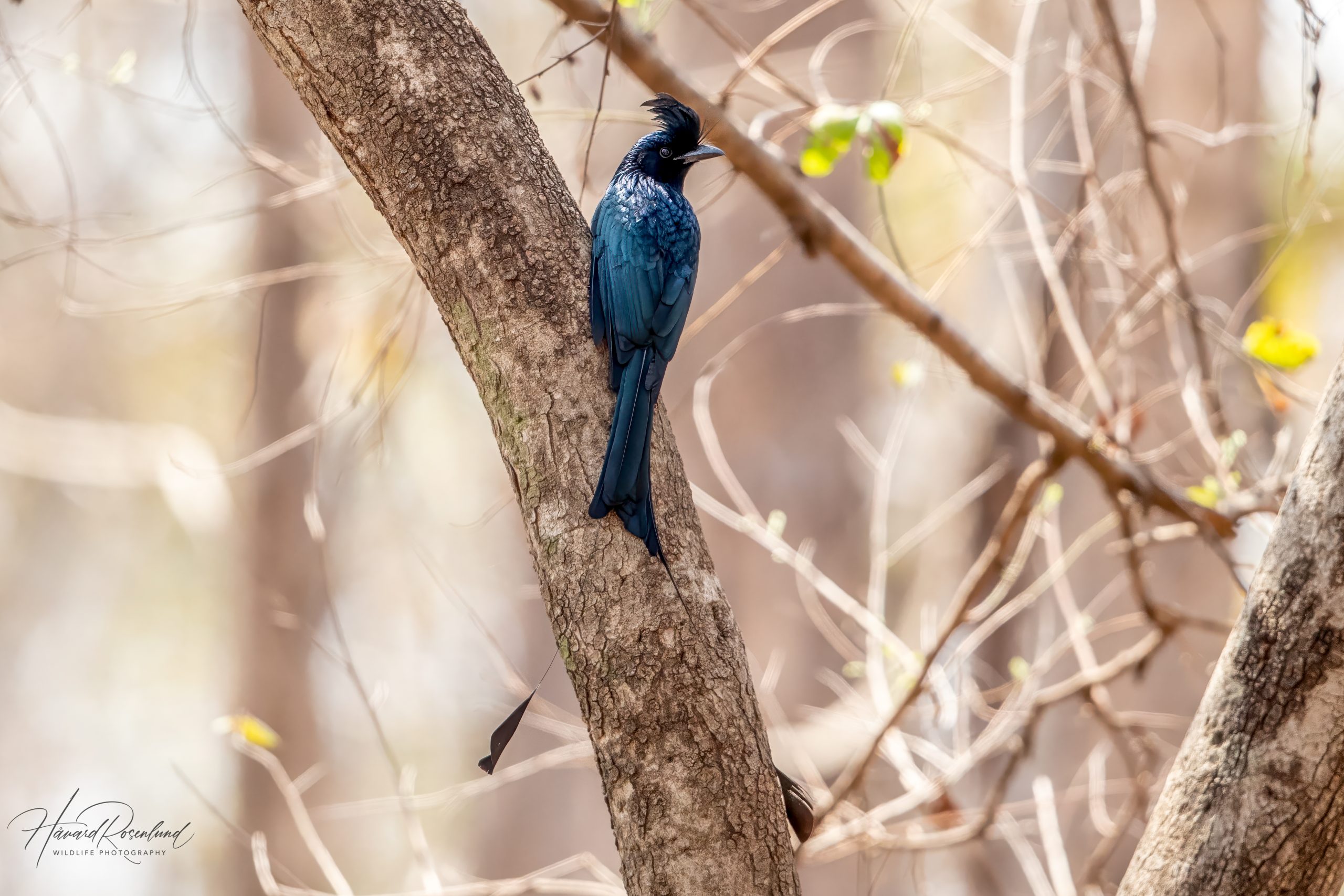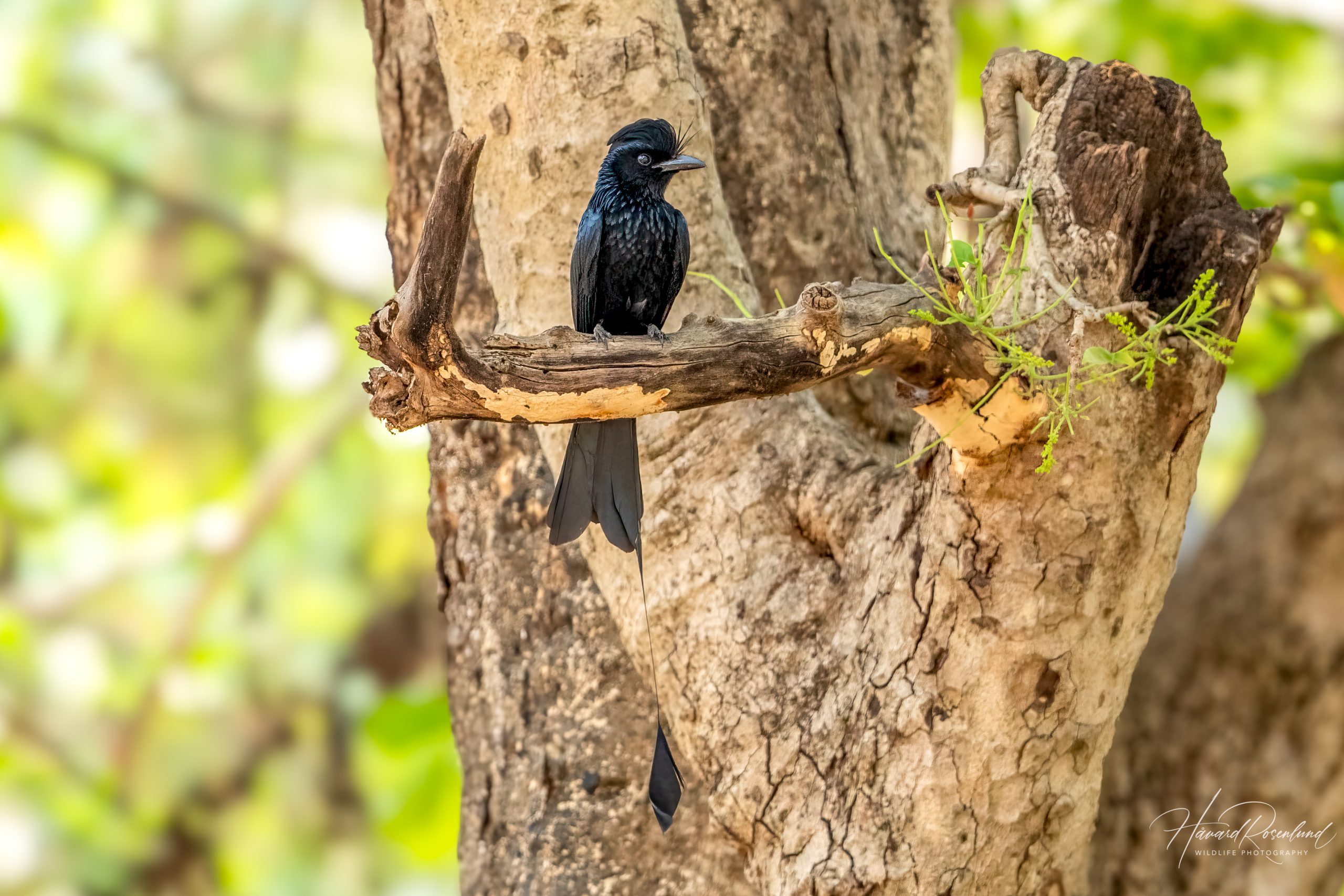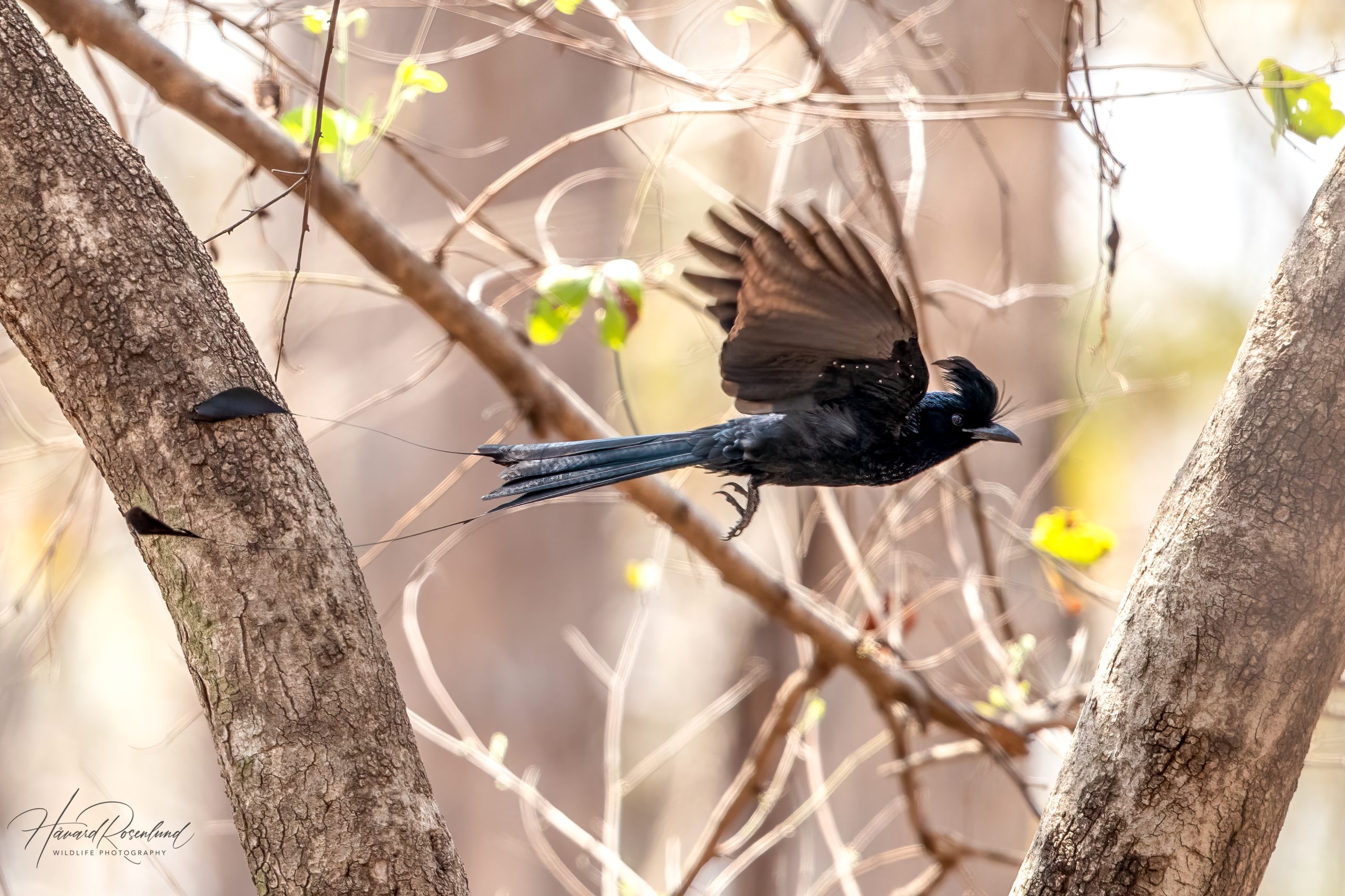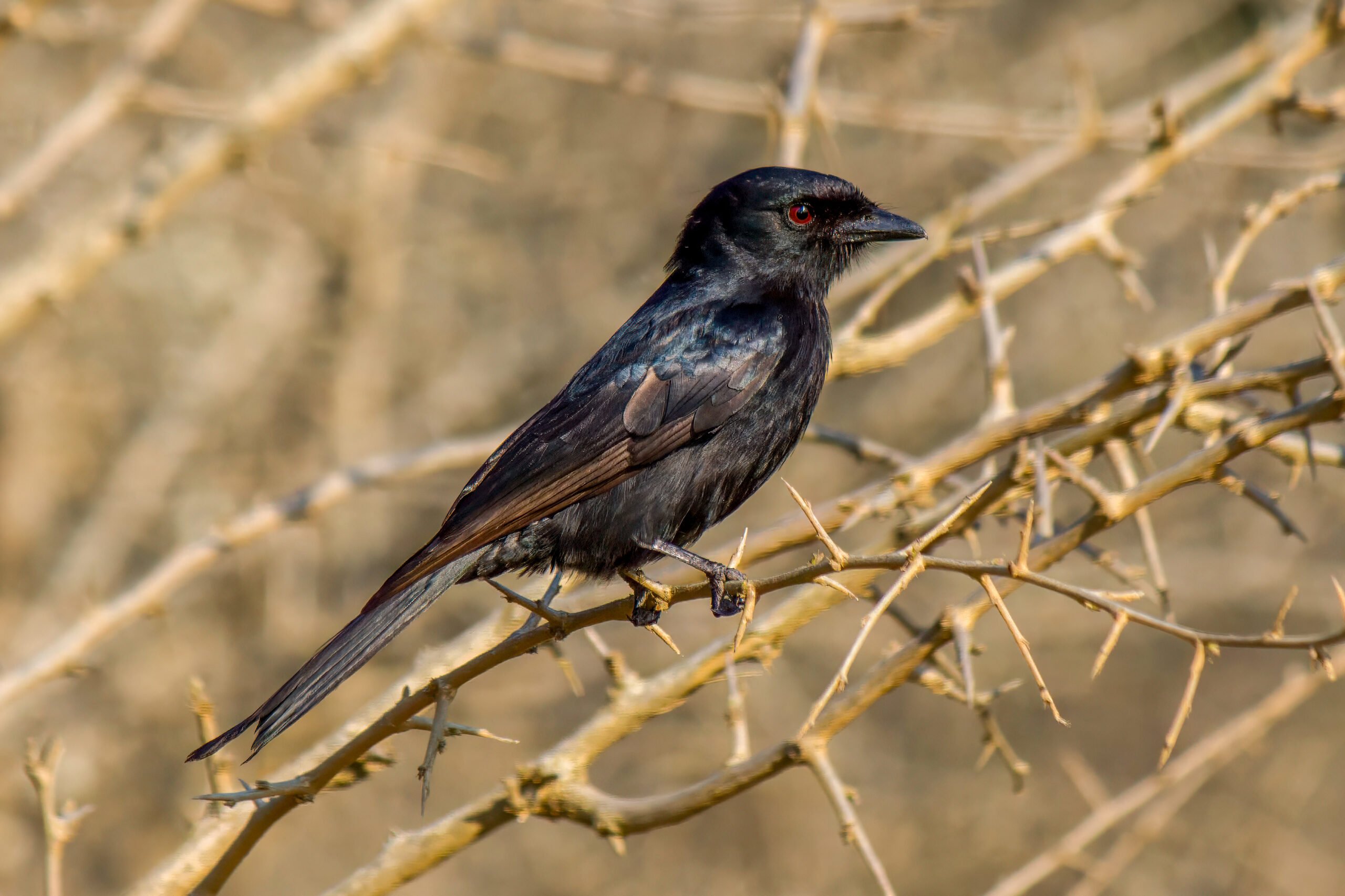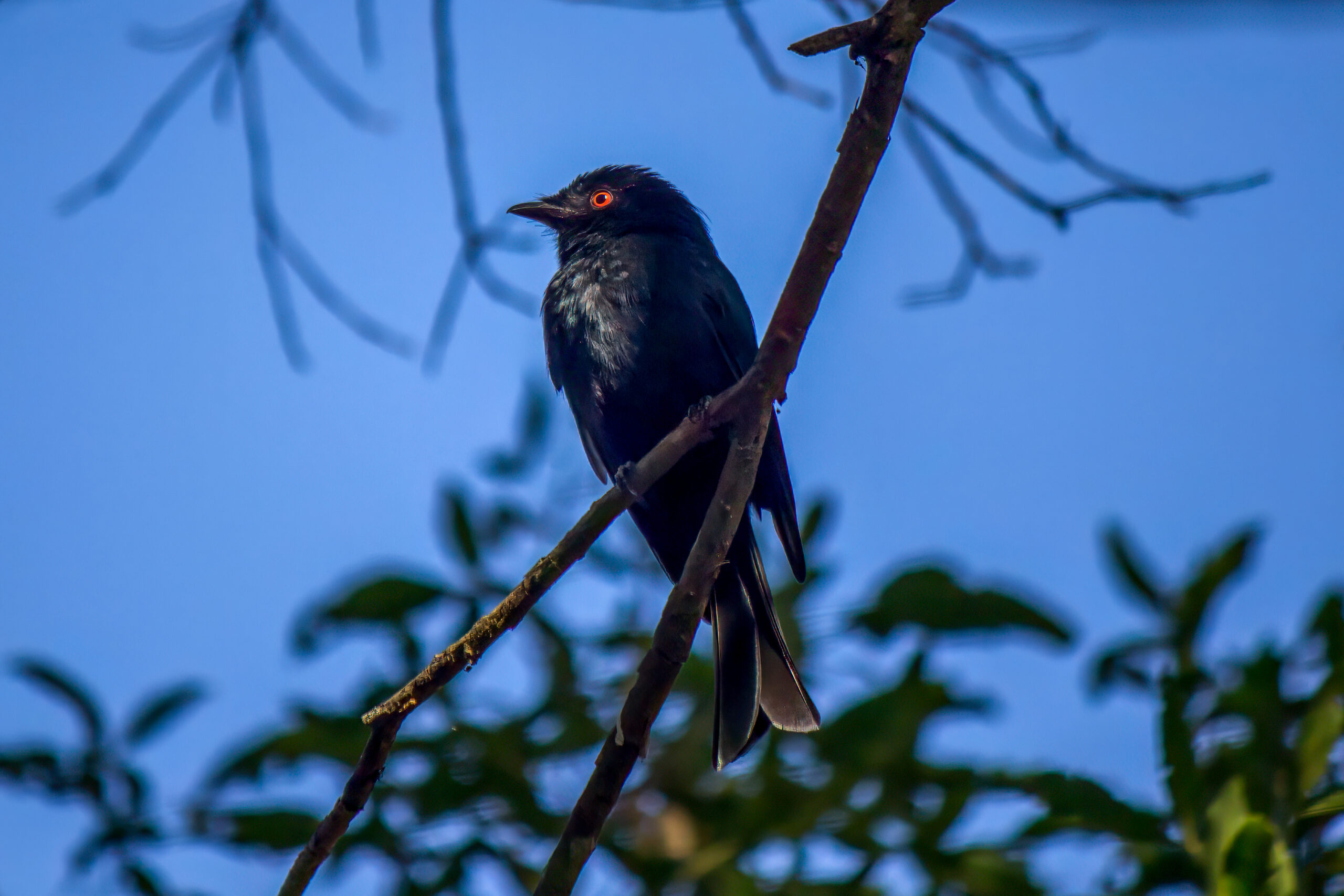Greater Racket-tailed Drongo
(Dicrurus macrocercus)
Description
The greater racket-tailed drongo (Dicrurus paradiseus) is a striking bird known for its distinct long tail with two elongated outer feathers ending in racket-shaped tips. This species is found across the Indian subcontinent, Southeast Asia, and parts of southern China. It typically measures about 31-35 cm (12-14 in) in length, with the tail streamers adding an additional 25-30 (10-12 in) cm. The bird is predominantly glossy black, which may exhibit an iridescent blue-green sheen under sunlight.
It is somewhat similar to the lesser racket-tailed drongo (Dicrurus remifer), but it is markedly larger in size, with a larger beak and longer tail streamers. Additionally, the lesser racket-tailed drongo lacks the distinct crest often found on the greater racket-tailed drongo (some subspecies lacks this crest).
Diet & habitat
The greater racket-tailed drongo inhabits a variety of forested environments, including tropical and subtropical moist broadleaf forests, mangroves, and sometimes gardens and plantations. It is an adept and agile feeder, primarily consuming insects, small invertebrates, and occasionally small vertebrates. The drongo is known for its bold and aggressive behavior while foraging, often hawking insects in mid-air or gleaning them from foliage. Additionally, it is known to mimic the calls of other birds, which may help in confusing prey or even in evading predators.
Nesting
The breeding season of the greater racket-tailed drongo generally occurs from March to June, varying slightly depending on geographic location. These birds are monogamous and build a small, cup-shaped nest made of twigs and spider webs, typically high in trees. Females lay about 2-4 eggs per clutch, which are incubated for approximately 14-15 days. Both parents share the responsibility of incubation and feeding the chicks. After hatching, the fledgling period lasts around 21-24 days, during which the chicks remain in the nest and are fed by the adults.
Status
The greater racket-tailed drongo is currently classified as least concern by the IUCN Red List. Despite habitat loss and fragmentation in some regions, the species remains widespread and common throughout much of its range. However, continued deforestation and habitat degradation could pose future threats to certain populations.




